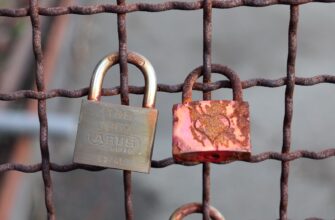## Introduction
In today’s digital world, securing your online accounts is critical. With cyberattacks increasing by 38% annually (according to Accenture), learning how to protect your sensitive data isn’t optional—it’s essential. If you’ve searched for “how to store account from hackers,” you likely meant securing accounts from unauthorized access. This guide provides actionable strategies to shield your accounts using proven methods, from password hygiene to advanced security layers. Follow these steps to transform vulnerability into robust defense.
## Why Account Security Can’t Be Ignored
Hackers deploy tactics like phishing, brute-force attacks, and credential stuffing to compromise accounts. A single breach can lead to identity theft, financial loss, or ransomware nightmares. The 2023 Verizon DBIR reveals 86% of breaches involve stolen credentials. Protecting accounts isn’t just about privacy; it’s about safeguarding your digital existence against evolving threats that exploit complacency.
## 10 Essential Steps to Secure Your Accounts
1. **Enable Multi-Factor Authentication (MFA)**
Add an extra verification layer beyond passwords. Use authenticator apps like Google Authenticator or hardware keys. SMS-based codes are less secure due to SIM-swapping risks.
2. **Create Uncrackable Passwords**
Generate 12+ character passwords mixing letters, numbers, and symbols. Avoid dictionary words or personal details. Example: `Y7$kQ!pL3@eR9*` instead of `password123`.
3. **Use a Password Manager**
Tools like Bitwarden or 1Password store and auto-fill complex passwords. They encrypt data and sync across devices, eliminating the need to memorize credentials.
4. **Update Software Regularly**
Patch operating systems, browsers, and apps promptly. Updates fix security flaws hackers exploit. Enable automatic updates where possible.
5. **Recognize Phishing Scams**
Verify sender addresses in emails/texts. Never click suspicious links or download attachments. Check for typos and urgent language designed to panic you.
6. **Secure Your Email Account**
Your email is a master key to other accounts. Use MFA, unique passwords, and review login activity monthly. Enable encryption if available.
7. **Monitor Account Activity**
Review login histories and active sessions in account settings. Set alerts for unfamiliar devices or locations.
8. **Avoid Public Wi-Fi for Sensitive Tasks**
Use a VPN (e.g., NordVPN, ExpressVPN) on public networks to encrypt traffic. Never access banking or email on open hotspots.
9. **Limit Third-Party App Permissions**
Revoke access for unused apps in social media or cloud accounts. They can become backdoors for data leaks.
10. **Backup Critical Data**
Use encrypted cloud services (like iCloud or Tresorit) or offline drives. Ransomware can’t hold data hostage if you have backups.
## Advanced Protection for High-Risk Accounts
For banking, email, or work accounts, implement extra safeguards:
– **Biometric Authentication**: Use fingerprint or facial recognition where supported.
– **Dedicated Devices**: Reserve one device exclusively for financial transactions.
– **Security Keys**: Physical USB/NFC devices (e.g., YubiKey) for phishing-proof MFA.
Regularly audit account recovery options—ensure backup emails/phones are current and secure.
## What to Do If Hacked
1. **Immediately Change Passwords** and log out all sessions.
2. **Scan Devices** with antivirus software (Malwarebytes, Norton).
3. **Contact Financial Institutions** to freeze compromised cards/accounts.
4. **Report to Authorities** via platforms like reportfraud.ftc.gov.
5. **Notify Contacts** if scams originated from your account.
## Frequently Asked Questions (FAQ)
**Q: How often should I change my passwords?**
A: Only when a breach occurs. Focus on password strength and MFA instead of arbitrary resets.
**Q: Are password managers safe?**
A: Yes, reputable ones use AES-256 encryption. Your master password is the key—never reuse it elsewhere.
**Q: Can hackers bypass MFA?**
A: Rarely, but possible via SIM swapping. Use authenticator apps or security keys for higher safety.
**Q: What’s the biggest mistake people make?**
A: Password reuse. 65% repeat passwords across accounts (Google study), making one breach catastrophic.
**Q: Should I use antivirus software?**
A: Absolutely. Pair it with firewalls and real-time threat detection for comprehensive protection.
## Final Thoughts
Securing accounts demands vigilance, not complexity. Start with MFA and password managers—these alone block 99.9% of automated attacks (Microsoft). Update habits continuously; cybersecurity evolves daily. By implementing these layers, you turn your accounts into fortresses, keeping hackers at bay and your data uncompromised.








